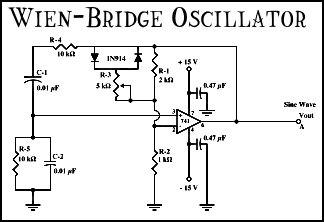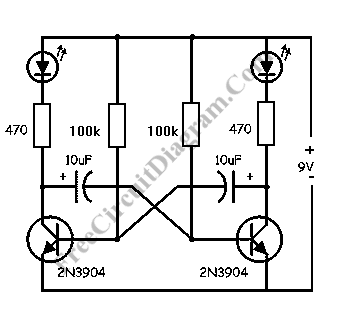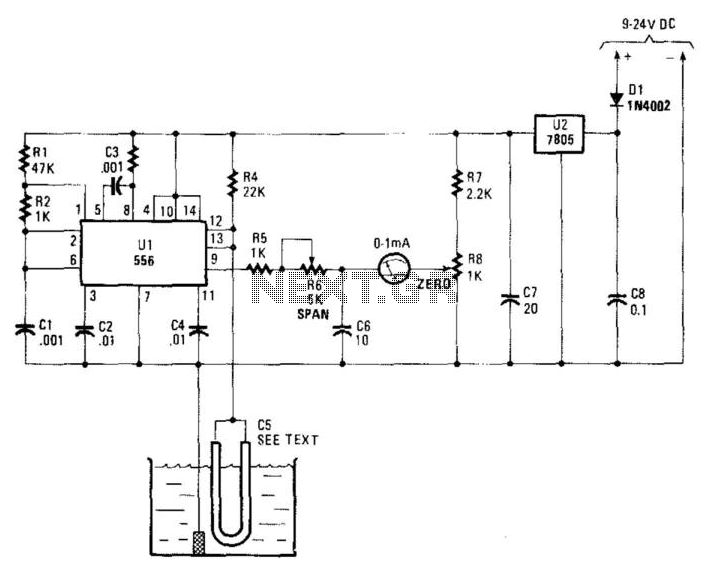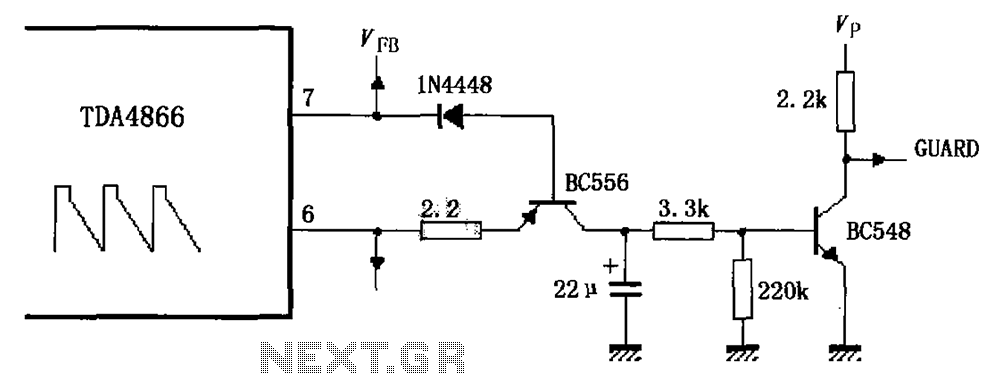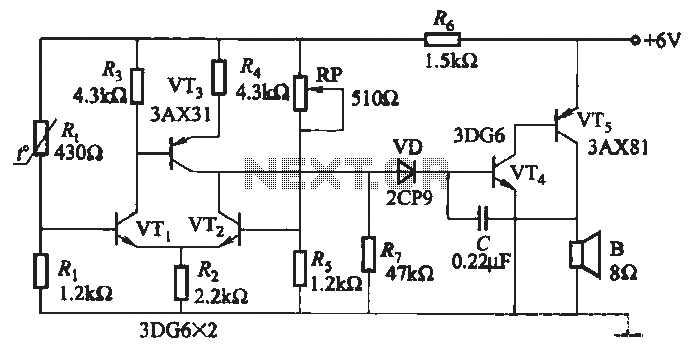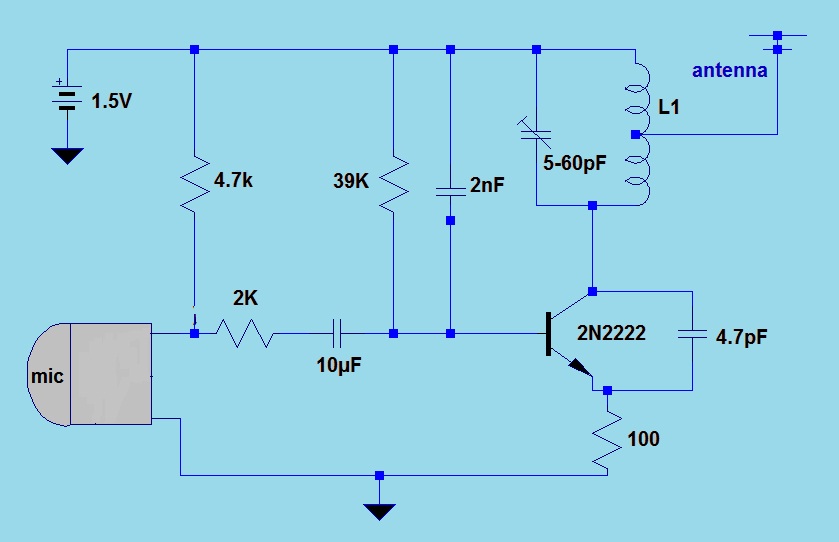
Walkman splice power production circuit
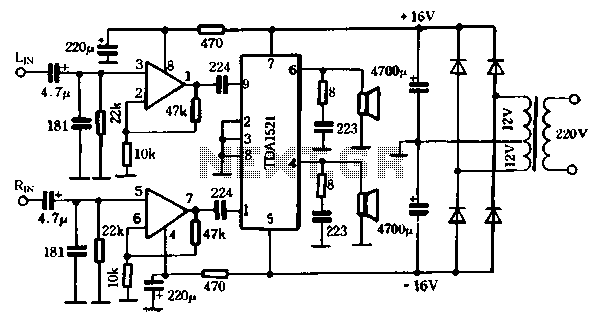
The first power amplifier circuit illustrated in Figure 5-88 utilizes the NE5532 operational amplifier, configured as a line amplifier, and features the TDA1521 power amplifier. This circuit operates with a dual power supply and eliminates the need for coupling capacitors, thereby enhancing bass response. When supplied with a voltage of 16V and a load resistance (RL) of 8 ohms, the circuit can deliver an output power of approximately 21 watts. The design incorporates short-circuit and thermal protection, ensuring distortion levels remain below 0.5%. The accompanying power supply circuit, depicted in Figure 5-88, employs a transformer with a secondary voltage of 2 x 12V, which is rectified and filtered to provide the necessary 16V output for the amplifier. Notably, the NE5532 power supply and the amplifier share the same power source.
This power amplifier circuit is designed to provide high fidelity audio amplification while maintaining simplicity in construction, making it suitable for amateur audio enthusiasts. The NE5532 operational amplifier is renowned for its low noise and high-performance characteristics, which contribute to the overall sound quality of the amplifier. The TDA1521 is a robust power amplifier capable of delivering substantial output power with minimal distortion, making it an ideal choice for driving speakers in various applications.
The elimination of coupling capacitors in this design not only simplifies the circuit but also improves the bass response by allowing lower frequencies to pass through without attenuation. The output stage of the amplifier is protected against short circuits and overheating, which enhances the reliability of the circuit during operation. With a power supply voltage of 16V and a load impedance of 8 ohms, the amplifier achieves an output power of around 21 watts, which is suitable for driving typical home audio speakers.
The power supply circuit is designed to convert the transformer’s secondary voltage of 2 x 12V into a stable 16V output through rectification and filtering. This ensures that the amplifier receives a consistent voltage level, which is crucial for maintaining performance and minimizing distortion. The shared power supply for both the NE5532 and the TDA1521 simplifies the overall design, reducing component count and potential points of failure.
In summary, this amplifier circuit exemplifies a well-engineered solution for audio amplification, combining effective design principles with high-quality components to deliver superior audio performance. Its ease of construction and reliability make it an excellent choice for both amateur and professional audio applications.The first power amplifier circuit shown in Figure 5-88. Using the "op amp of the Emperor" NE5: 5 32 5 times for line amplifiers, power amp choice Manifold TDAI5210 TDA1521 fidelity OCL dual power supply, the output of this circuit eliminates the need for a coupling capacitor homes, can be extended bass response. When the supply voltage is 16V, RL = 8, fl, an output power of about 2 1 SW. At this point there is only the distortion output short circuit and thermal protection within 0.5% 6TDA1521, provide convenience for amateur production. As shown in Figure 5-88 is to the right of the power supply circuit, the transformer secondary voltage of 2 12V, after the rectifier filter output voltage is 16V, directly connected to the amplifier for electricity.
NE5532 power supply and amplifier share the same power a
This power amplifier circuit is designed to provide high fidelity audio amplification while maintaining simplicity in construction, making it suitable for amateur audio enthusiasts. The NE5532 operational amplifier is renowned for its low noise and high-performance characteristics, which contribute to the overall sound quality of the amplifier. The TDA1521 is a robust power amplifier capable of delivering substantial output power with minimal distortion, making it an ideal choice for driving speakers in various applications.
The elimination of coupling capacitors in this design not only simplifies the circuit but also improves the bass response by allowing lower frequencies to pass through without attenuation. The output stage of the amplifier is protected against short circuits and overheating, which enhances the reliability of the circuit during operation. With a power supply voltage of 16V and a load impedance of 8 ohms, the amplifier achieves an output power of around 21 watts, which is suitable for driving typical home audio speakers.
The power supply circuit is designed to convert the transformer’s secondary voltage of 2 x 12V into a stable 16V output through rectification and filtering. This ensures that the amplifier receives a consistent voltage level, which is crucial for maintaining performance and minimizing distortion. The shared power supply for both the NE5532 and the TDA1521 simplifies the overall design, reducing component count and potential points of failure.
In summary, this amplifier circuit exemplifies a well-engineered solution for audio amplification, combining effective design principles with high-quality components to deliver superior audio performance. Its ease of construction and reliability make it an excellent choice for both amateur and professional audio applications.The first power amplifier circuit shown in Figure 5-88. Using the "op amp of the Emperor" NE5: 5 32 5 times for line amplifiers, power amp choice Manifold TDAI5210 TDA1521 fidelity OCL dual power supply, the output of this circuit eliminates the need for a coupling capacitor homes, can be extended bass response. When the supply voltage is 16V, RL = 8, fl, an output power of about 2 1 SW. At this point there is only the distortion output short circuit and thermal protection within 0.5% 6TDA1521, provide convenience for amateur production. As shown in Figure 5-88 is to the right of the power supply circuit, the transformer secondary voltage of 2 12V, after the rectifier filter output voltage is 16V, directly connected to the amplifier for electricity.
NE5532 power supply and amplifier share the same power a
Warning: include(partials/cookie-banner.php): Failed to open stream: Permission denied in /var/www/html/nextgr/view-circuit.php on line 713
Warning: include(): Failed opening 'partials/cookie-banner.php' for inclusion (include_path='.:/usr/share/php') in /var/www/html/nextgr/view-circuit.php on line 713
